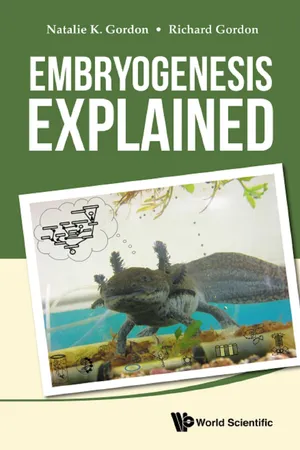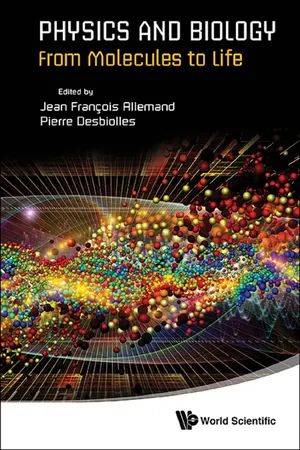Biological Sciences
Cytoskeleton
The cytoskeleton is a network of protein filaments within a cell that provides structural support, helps with cell movement, and facilitates intracellular transport. It is composed of three main types of filaments: microfilaments, intermediate filaments, and microtubules. The cytoskeleton plays a crucial role in maintaining cell shape, organizing cellular components, and enabling cell motility.
Written by Perlego with AI-assistance
Related key terms
2 Key excerpts on "Cytoskeleton"
- eBook - ePub
- Natalie K Gordon retired, Richard Gordon(Authors)
- 2016(Publication Date)
- WSPC(Publisher)
Chapter 5
The Cytoskeleton
If one consults any of the standard developmental biology textbooks, the Cytoskeleton will be briefly presented as the support structure of the cell and about as interesting to most biologists as the floor struts in a ballet school would be to an artistic director seeking the next prima ballerina. However, to think of Cytoskeleton only as the structure on which cells do their remarkable things, leaves out a good part of the story of how cells work.We prefer to think of the Cytoskeleton as a troupe of acrobats. They run about in the cell, come together, stack to form some remarkable structure and then as rapidly as it appears, the structure falls apart and/or moves and the acrobats appear elsewhere on the stage. These acrobats are the individual proteins that make up the Cytoskeleton, and the many proteins that bind to Cytoskeleton, transiently hold it together, or move along it. The surface area available on the Cytoskeleton filaments for molecules to electrostatically and chemically bind is huge, far exceeding that of all cell membranes in an organism1 . Ignoring the Cytoskeleton while doing molecular biology would be like trying to choreograph a classical ballet while sharing the same stage with a troupe from Cirque de Soleil2 ,3.This unfortunate attitude towards the Cytoskeleton is beginning to change. For example, several of the pharmaceutical scientific supply companies have begun manufacturing kits designed specifically to detect the phenomenon of “cytoskeletal rearrangements” because all kinds of interesting other stuff seems to happen precisely when these rearrangements occur and therefore the rearrangements can be used to time such events4 ,5. We find it ironic that only a few people seem to actually think this is more than a convenient coincidence.The Cytoskeleton is, as the name implies, the skeleton of the cell giving it shape and form. The concept goes back to Nikolai K. Koltsov in 19036 . Koltsov formulated the idea that the deviation of the shape of a cell from the simple ball, that one would expect if it were a liquid drop, is caused by a stiff but elastic Cytoskeleton within the cell7 . Cytoskeleton is nowadays more precisely defined as the various structures that are filamentous polymers of a single class of protein. These filamentous polymers have long-range order within the cell8 - eBook - ePub
Physics And Biology: From Molecules To Life
From Molecules to Life
- Jean Franᅢᄃois Allemand, Pierre Desbiolles(Authors)
- 2014(Publication Date)
- WSPC(Publisher)
The mechanics of cells depends on their Cytoskeleton which was described in the first chapter. It is a network of filaments formed by self-assembly of proteins: actin, microtubules and intermediate filaments. Actin filaments and microtubules are polymers formed respectively of actin and tubulin monomers. Contrarily to chemical macromolecules, which are assembled covalently, Cytoskeleton filaments are assembled mainly through electrostatic interactions. Within the cell, actin polymerization is possible thanks to a chemical energy source which is the hydrolysis of adenosin tri-phosphate (ATP) in adenosine di-phosphate (ADP).Actin monomers polymerise at one end of an actin filament once in their ATP form (one actin monomer linked to one ATP molecule). Then, once assembled within the filament, actin monomers loose a phosphate, and subsequently depolymerize from the other filament end, and finally regenerate in their ATP-actin form within the cytoplasm. Actin filaments are thus asymmetric polymers that elongate mainly on one end, and depolymerize mainly from the other end. Microtubules elongate and shrink through an analogous process that consumes the hydrolysis of GTP (guanosine tri-phosphate) into GDP. These processes of elongation and shrinkage are responsible for a very high dynamics of the Cytoskeleton. Moreover, molecular motors participate in the high dynamics since they are associated with Cytoskeleton filaments and are able to slide them apart, or displace them along the cell membrane or the nucleus. The main players of cell mechanics and motility are actin filaments and their associated proteins. Some of them, like the cross-linking proteins, bridge actin filaments, either in parallel bundles, or imposing a fixed angle to the filaments, and allow the formation of actin fibers or gels.A cooking analogy that can highlight the collective behavior of filaments and their mechanics is a spaghetti dish. If spaghetti are raw, they are rigid rods, and they do not confer any mechanical cohesive property to the spaghetti dish. If they are too cooked, spaghetti are very flexible and thus very curved in the dish; when one wants to take them out of the pan, they remain bulky, but can also slide between one another. Considering the scale of a cell, Cytoskeleton filaments are rather reminiscent of al dente
Learn about this page
Index pages curate the most relevant extracts from our library of academic textbooks. They’ve been created using an in-house natural language model (NLM), each adding context and meaning to key research topics.

